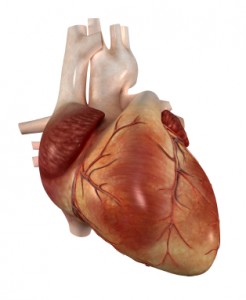Mindfulness-Based Stress Reduction Equivalent to Escitalopram for Treatment of Anxiety Disorders
Hoge et al reported in JAMA Psychiatry (2022) that in a randomized clinical trial of 276 adults with anxiety disorders, 8-week treatment with mindfulness-based stress reduction (MBSR) was noninferior to escitalopram. The “MBSR is a manualized 8-week protocol with weekly 2.5-hour long classes, a day-long retreat weekend class during the fifth or sixth week, and 45-minute daily home practice exercises…. Qualified instructors taught the theory and practice of several forms of mindfulness meditation, such as breath awareness (focusing attention on the breath and other physical sensations), a body scan (directing attention to one body part at a time and observing how that body part feels), and mindful movement (stretching and movements designed to bring awareness to the body and increase interoceptive awareness)….Escitalopram was initiated at 10 mg daily orally and increased to 20 mg daily at week 2 if well tolerated or delayed if not.” The investigators concluded that “mindfulness-based stress reduction was a well-tolerated treatment option with comparable effectiveness to a first-line medication for patients with anxiety disorders.”
Mindfulness-Based Cognitive Therapy May Improve Depression More Than Fitness Intervention
In a study by researcher Stuart Eisendrath and colleagues, people with treatment-resistant unipolar depression responded better to an intervention that combined mindfulness training with cognitive therapy than to one that included exercise, nutrition counseling, and music therapy.
The 173 participants had failed to respond to at least two different antidepressant medications. During the study period, all participants were taking an antidepressant, but none were receiving other types of therapy.
After eight weeks, the mindfulness-based cognitive therapy (MBCT) group showed greater improvement in their depression symptoms than the exercise and nutrition group. Of the MBCT group, 29.58% had a large reduction in symptoms, while 17.19% of the comparison group showed a similarly large reduction in symptoms.
A subgroup of the participants also received functional magnetic resonance imaging (fMRI) as part of the study. While completing a task related to emotional working memory, the MBCT group showed enhanced activation of the dorsal lateral prefrontal cortex (to levels seen in non-depressed people). This area is related to executive control of depression and memory functions. The MBCT group also showed reduced activation of the ventral lateral prefrontal cortex compared to the comparison group. Members of the MBCT whose depression symptoms had improved also showed better regulation of the amygdala during the task compared to the exercise and nutrition group.
The research was presented at the 2016 meeting of the American Psychiatric Association.
Mindfulness Therapy Improves Anxiety in Youth with a Bipolar Parent
Children of parents with bipolar disorder are prone to anxiety and emotional dysregulation, but treating these symptoms with antidepressants can provoke symptoms of mania. Thus, non-pharmacological treatements for anxiety and depression are needed. A recent study by Melissa DelBello found that twelve weeks of mindfulness-based cognitive therapy improved symptoms of anxiety and mood dysregulation in 20 youth with a bipolar parent. DelBello used functional magnetic resonance imaging (fMRI) to observe that the therapy increased activation of brain structures related to emotion and sensing. Amygdala activation differed between those with anxiety and those with mood dysregulation, suggesting that the therapy’s effect was on regions that modulate the amygdala, including prefrontal and insular regions, rather than on the amygdala itself.
Music, Mindfulness and Exercise Improve Brain Functioning
Psychiatrists should take the lead in endorsing general wellness and encouraging healthy behaviors, says researcher James Hudziak. He suggests that opportunities to practice music, mindfulness, and exercise should be made available to all school children to increase brain health, and that more intensive efforts are necessary for children in families that are at risk for mood and behavioral difficulties or in children who show some dysfunction in these areas. Hudziak has implemented a statewide program in Vermont that encourages families to engage in these healthy practices.
Hudziak and colleagues analyzed brain scans of 232 children ages 6 to 18, looking for relationships between cortical thickness and musical training. They found that practicing an instrument such as the piano or violin increased working memory, gray matter volume in the brain, and the ability to screen out irrelevant noise. Practicing mindfulness increased white matter volume and reduced anxiety and depression. Exercise also increased brain volume and neuropsychological abilities.
Now Hudziak urges parents to advocate for the teaching of music, mindfulness, and exercise in schools as a way of improving general health, especially since music and gym are often the first programs to be cut when schools face budget shortages. Hudziak suggests that opportunities for athletics should be provided to all children, independent of their skill level, rather than only for the best athletes who “make the team.” Intramural teams should be open to all children, including those with less ability or minimal athletic skills. Exercise, teamwork, and friendships benefit all children.
For more information about the programs Hudziak implemented in Vermont, use the internet to search for the Vermont Family Based Approach, see his book Developmental Psychopathology and Wellness: Genetic and Environmental Influences, or call the University of Vermont Medical Center at (802)847-0000 or (800)358-1144.
Another tool that may be useful to parents of children aged 2 to 12 who are at risk for mood disorders is our Child Network, a secure online portal where parents can complete quick weekly ratings of their child’s mood and behavior, which is then graphed over time and can be used to show the child’s doctors how his or her symptoms are fluctuating and how well any treatment is working.
Mindfulness Interventions May Reduce Substance Use and Cravings
A 2014 meta-analysis of the literature to date on mindfulness-based interventions (MBIs) for substance use disorders suggests that these interventions can reduce consumption of alcohol, cocaine, amphetamines, marijuana, cigarettes, and opiates, compared to several types of controls. The research by Alberto Chiesa and Alessandro Serretti, published in the journal Substance Use and Misuse, includes 24 studies published before 2012. The authors also found some evidence that MBIs are associated with reduced craving and increased mindfulness. Most of the studies included in the meta-analysis were small, so their generalizability is limited.
A 2014 article by S. Bowen and colleagues in the journal JAMA Psychiatry compared mindfulness-based relapse prevention with standard relapse prevention and treatment as usual for people recovering from substance abuse. Mindfulness-based relapse prevention combines the cognitive behavioral approach of standard relapse prevention with MBIs that have been successful in other studies.
Bowen et al. found that both standard relapse prevention and mindfulness-based relapse prevention lowered the risk of relapse and reduced days of substance use at 6 months, compared to treatment as usual. The standard treatment delayed first drug use, but the mindfulness intervention decreased use at the 12-month mark compared to both standard relapse prevention and treatment as usual.
Participation in Sports May Mitigate Genetic Risk for ADHD in School-Aged Children

At the 2021 meeting of the Society of Biological Psychiatry, researcher Keiko Kunitoki and colleagues reported that participation in sports decreased behavior abnormalities in 9- and 10-year-old children at genetic risk for attention deficit hyperactivity disorder (ADHD). Sports were associated with greater hippocampal volume, which was associated with fewer behavioral abnormalities. Kunitoki and colleagues concluded that “participation in team sports mitigated genomic risk for psychopathology at age 9–10 in part through increased hippocampal volume.”
Editor’s Note: These data are consistent with a program called the Vermont Family-Based Approach developed by researcher James Hudziak, who heads the Vermont Center for Children, Youth and Families at the University of Vermont. The program encourages families to practice different domains of wellness, such as music, mindfulness, exercise, and nutrition, among others. The idea is to support emotional and behavioral health, and to do so intensively in families where children show signs of mood and behavioral difficulties or are at risk for these difficulties.
Hudziak analyzed brain scans of 232 children aged 6 to 18 and reported that “practicing an instrument such as the piano or violin increased working memory, gray matter volume in the brain, and the ability to screen out irrelevant noise. Practicing mindfulness increased white matter volume and reduced anxiety and depression. Exercise also increased brain volume and neuropsychological abilities.”
In 2015, researcher Benjamin I. Goldstein reported that 20 minutes of vigorous exercise on a bike improved cognition and decreased hyperactivity in the medial prefrontal cortex in adolescents with and without bipolar disorder, and researcher Danella M. Hafeman reported that offspring of parents with bipolar disorder who exercised more had lower levels of anxiety.
To summarize, engaging in exercise, team sports, music, and meditation/mindfulness are beneficial for all children, and can be especially helpful for those at risk for depression or bipolar disorder. Children who are already symptomatic should additionally be offered something like family focused therapy (FFT), a multi-faceted approach developed by researcher David Miklowitz, in which families of young people at risk for bipolar disorder take part in therapy, learning together about the illness and practicing strategies for communication and coping.
Treating Symptoms of Bipolar Disorder in Children at Risk
At the 2019 meeting of the American Academy of Child and Adolescent Psychiatry, one symposium was devoted to new research on predicting onset of bipolar disorder in children who have a family history of the disorder. Below are some of the findings that were reported. See previous articles for more on this symposium.
Sub-Threshold Bipolar Disorder or BP-NOS is Impairing and Requires Treatment
In research Danella M. Hafeman’s research, children with BP-NOS were almost as ill as those with bipolar I disorder (BP I) and experienced equal incidence of suicide attempts, substance abuse, other simultaneous psychiatric diagnoses, and functional impairment, clearly indicating that they were in need of treatment. About 50–65% of participants with a family history of bipolar disorder converted from diagnoses of BP-NOS to BP I, while those with BP-NOS and no family history of bipolar disorder converted to BP I at rates of about 30–48%.
Several presenters presented data showing that those with sub-threshold bipolar disorder had severe functional impairment, a high incidence of suicide attempts, and additional diagnoses including ADHD, conduct disorder, anxiety, and substance abuse.
Diagnostic Tool Can Help Identify Children with Bipolar Disorder
Researcher Amy Yule indicated that a tool called the Child Behavior Checklist (CBCL) is effective for making the diagnosis of conduct disorder in children with bipolar disorder, while researcher Joseph Biederman showed that the CBCL can also identify children with bipolar I disorder and is faster and simpler to use in clinical practice than are full structured diagnostic interviews.
Researcher Janet Wozniak found that there was a high incidence of bipolar disorder in first-degree relatives of children with sub-threshold bipolar disorder, suggesting the validity of identifying youth with sub-threshold bipolar symptoms.
As discussed above, there is also a high incidence of children with BP-NOS progressing to a full diagnosis of bipolar I or II disorder (as many as 50% of those with a family history of bipolar disorder). However, the point is not to wait for the negative effects of a full diagnosis before beginning treatment: BP-NOS itself requires treatment.
Discussion and Emerging Consensus on Treatment, Particularly of BP-NOS
Experts in the field agree that family focused therapy (FFT) or its equivalent is a crucial first step to treatment of depression, cyclothymia (cycling between depressive and hypomanic symptoms that do not meet the threshold for a diagnosis of bipolar disorder), and BP-NOS in children who are at high risk of bipolar disorder because they have a parent with the disorder.
A second area of agreement is that young people with BP-NOS should have a positive therapeutic coach (which could be a treating physician if no other person is available), who can emphasize important early steps that can improve short- and long-term health. These include maintaining a healthy diet, exercise (such as participation in school sports), the practice of mindfulness and/or meditation, and playing and practicing a musical instrument. Parental support is also critical to decreasing negative expressed emotion.
Early interventions and wellness programs that focus on these factors are part of the successful Vermont Family Based Approach, led by psychiatrist Jim Hudziak, Director of the Vermont Center for Children, Youth, and Families. Since programs like these are not widely available, treating physicians must create their own teams to provide such encouragement, and teach families how to find or establish such a support network.
School teachers should be engaged in support of the treatment of a child with bipolar disorder. Teachers should pay special attention to behavioral symptoms of an ill child. It also may be important for physicians to connect directly with teachers to ensure that children recovering from an episode of bipolar disorder receive extra time for assignments, a decreased academic burden, and other support. Researcher Manon H. Hillegers indicated that intervention by a physician will likely be listened to and believed, while parental requests alone to teachers or to the school may go ignored.
Hillegers, like researcher Lakshmi Yatham and colleagues, have found that it takes a year after a first manic episode for a child’s cognition to return to normal, so that special allowances should be made for such students even many months after they have recovered from their mania.
Preventing Illness in the Offspring of a Parent with Bipolar Disorder
A 2018 article by researcher Robert Freedman and colleagues in the American Journal of Psychiatry reported that prenatal nutritional supplements can reduce mental illness in at-risk offspring. The article made a good case for supplementation with folate, phosphatidylcholine, and vitamins A and D.
Here we describe some additional ways to minimize risk of mental illness in children who are at risk for bipolar disorder or other mental illnesses.
Some efforts at prevention can begin even before a child is conceived. Avoiding smoking or drinking alcohol and maintaining a nutritious diet to prevent inflammation and excessive weight gain before conception could reduce adverse epigenetic effects on the offspring. Epigenetics refers to environmental influences on gene transcription. The impact of life experiences such as a mother or father’s substance use is not registered in their child’s DNA sequence, but can influence the structure of the child’s DNA or its packaging.
Maternal good health and wellbeing during pregnancy has also been shown to improve neonatal health and functioning.
Once a child is born, they can be encouraged in healthy habits, including a nutritious diet, good sleeping habits, regular vigorous exercise, and mindfulness/meditation training (which pediatric psychiatrist James Hudziak has suggested should be universal).
For a child who is beginning to develop mood or behavioral symptoms, more intensive intervention may be prudent. Research supports the effectiveness of family interventions such as family-focused therapy (FFT) for youth with depression, cyclothymia, or bipolar disorder not otherwise specified (BP-NOS) and a family history of bipolar disorder. Researcher David J. Miklowitz described the effects of this intervention in a 2013 article in the Journal of the American Academy of Child and Adolescent Psychiatry.
Depression in children 3 to 6 years of age is as common as depression in older children (with rates around 1–2%), and robust improvements have been observed when families engage in parent child interaction therapy (PCIT) with a focus on emotional development. In PCIT, parents are coached while interacting with their children and encouraged to establish warm interactions while setting appropriate limits. In a study by Joan L. Luby and colleagues published in the American Journal of Psychiatry in 2018, using PCIT modified to include an emotional development component improved depression and associated symptoms in children aged 3 to 11, and it also improved mothers’ mood and behavior. Read more
Management of Unipolar and Bipolar Depression During Pregnancy
 At the Maryland Psychiatric Research Society’s continuing medical education conference in November, Lauren Osbourne, Assistant Director of the Women’s Mood Disorders Clinic at Johns Hopkins Hospital, gave a presentation on the management of mood and anxiety during pregnancy and lactation. She had a number of important ideas for physicians and patients to consider in their decision-making process.
At the Maryland Psychiatric Research Society’s continuing medical education conference in November, Lauren Osbourne, Assistant Director of the Women’s Mood Disorders Clinic at Johns Hopkins Hospital, gave a presentation on the management of mood and anxiety during pregnancy and lactation. She had a number of important ideas for physicians and patients to consider in their decision-making process.
According to Osbourne, 60%-70% of pregnant women with unipolar depression who discontinue their antidepressants relapse. Of those with bipolar disorder who discontinue their mood stabilizers, 85% relapse, while 37% of those who stay on their medications relapse.
Something to consider when deciding whether to continue medication while pregnant is that depression in pregnancy carries its own risks for the fetus. These include preterm delivery, low birth weight, poor muscle tone, hypoactivity, increased cortisol, poor reflexes, and increased incidence of attention deficit hyperactivity disorder (ADHD) and other behavioral disorders.
The placenta makes an enzyme 11-BHSD2 that lowers the stress hormone cortisol in the baby. However, this enzyme is less active in depression, exposing the fetus to higher levels of cortisol.
Thus, the decision about whether to continue medications during pregnancy should consider the risks to the fetus of both the mother’s depression and the mother’s medications.
Most antidepressants are now considered safe during pregnancy. There have been reports of potential problems, but these data are often confounded by the fact that women with more severe depression are more likely to require antidepressants, along with other risk variables such as smoking or late delivery (after 42 weeks). When these are accounted for by using matched controls, the apparent risks of certain antidepressants are no longer significant. This includes no increased risk of persistent pulmonary hypertension, autism, or cardiac malformations.
There may be a possible increased risk of Neonatal Adaption Syndrome (NAS) in the first weeks of life in babies who were exposed to selective serotonin reuptake inhibitor (SSRI) antidepressants in the third trimester. This syndrome presumably results from antidepressant withdrawal, and can include respiratory distress, temperature changes, decreased feeding, jitteriness/irritability, floppiness or rigidity, hypoglycemia, and jaundice. There is not yet a robust literature on the syndrome, but Osbourne suggested that it disappears within 2 weeks of birth.
In her practice, Osbourne prefers to prescribe sertraline, which has the best safety data, along with fluoxetine. Sertraline is also OK for breastfeeding. There is less data on bupropion, but it also appears to be safe during pregnancy. Endocrine and enzyme changes in pregnancy typically cause a 40% to 50% decrease in concentrations of antidepressants, so doses of antidepressants typically must be increased in order to maintain their effectiveness.
Osbourne ranked mood stabilizers for bipolar disorder, from safest to most worrisome. Lamotrigine is safest. There is no evidence linking it to birth defects, but higher doses are required because of increased clearance during pregnancy. Lithium is next safest. There are cardiac risks for one in 1,200 patients, but these can be monitored. Carbamazepine is third safest. One percent of babies exposed to carbamazepine will develop spina bifida or craniofacial abnormalities. Valproate is least safe during pregnancy. Seven to ten percent of babies exposed to valproate will develop neural tube defects, other malformations, or developmental delay, with a mean decrease of 9 IQ points. The atypical antipsychotics all appear safe so far.
Alternatives and Adjuncts to Medications in Pregnancy
Minimizing Cardiovascular Risk in Bipolar Disorder
 At the 2017 meeting of the American Association of Child and Adolescent Psychopharmacology, researcher Ben Goldstein gave an overview on cardiovascular risk and bipolar disorder. He noted a study by Nicole Kozloff and colleagues in the Journal of Affective Disorders in 2010 that indicated that onset of cardiovascular disorder occurred an average of 17 years earlier in those with BP I (at age 40-45 years) compared to controls (at age 55-60 years). Several risk factors made onset of cardiovascular disorder more likely, including diabetes, obesity, and the metabolic syndrome (which consists of any three of the five following symptoms: high cholesterol, triglycerides, blood sugar, blood pressure, and waist circumference).
At the 2017 meeting of the American Association of Child and Adolescent Psychopharmacology, researcher Ben Goldstein gave an overview on cardiovascular risk and bipolar disorder. He noted a study by Nicole Kozloff and colleagues in the Journal of Affective Disorders in 2010 that indicated that onset of cardiovascular disorder occurred an average of 17 years earlier in those with BP I (at age 40-45 years) compared to controls (at age 55-60 years). Several risk factors made onset of cardiovascular disorder more likely, including diabetes, obesity, and the metabolic syndrome (which consists of any three of the five following symptoms: high cholesterol, triglycerides, blood sugar, blood pressure, and waist circumference).
Risk factors include pathophysiological and behavioral mechanisms and certain medications. Pathophysiological mechanisms include inflammation, oxidative stress, and autonomic and endothelial dysfunction.
Behavioral mechanisms include poor diet, exercise, sleep, and increases in tobacco and alcohol use.
Medications could also contribute, with the most to least problematic for weight gain including, among atypical antipsychotics: clozapine, olanzapine, risperidone, quetiapine, aripiprazole, ziprasidone, and lurasidone. Among mood stabilizers, worst to best for avoiding weight gain are: valproate, lithium, carbamazepine, oxcarbazepine, and lamotrigine.
Goldstein has data from retinal vascular photography (RVP), whereby blood vessels can be observed directly. As opposed to in adults, in youth large vessels are more problematic and arteriolar to venous ratio is abnormally higher in bipolar children compared to normal controls. This ratio is lower in bipolar adults, also reflecting increased cardiovascular risk.
Given the huge loss of life expectancy in bipolar disorder, primarily from cardiovascular disorders, Goldstein urges greater and earlier attention to reducing the pathophysiological, behavioral, and pharmacological mechanisms for poor health. These should be pursued in parallel with attempts at mood stabilization. Read more







